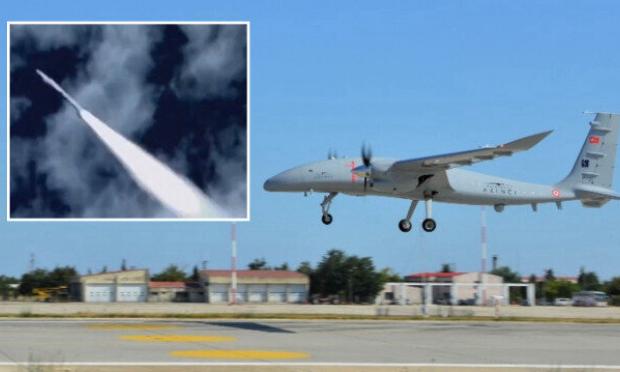In Athens yesterday we had warm handshakes and smiles and gestures of courtesy on both sides and also agreements that may not resolve the continental shelf issue or the issues raised by Turkey, but at least lay the foundations for a calmer situation in the Aegean.
This at least is the first reading as while all this was going on in the Greek capital, at the Sinopi test range Turkey seemed to be preparing something that is potentially capable of penetrating any Greek defence.
Turkey tested a supersonic missile and even launched it from Bayraktar's Akinci drone!
The range of the missile for the test conducted in Sinope was announced by the manufacturer Baykar to be 55 kilometers.
If it is confirmed in the coming days that this missile really flew supersonically and was not just launched for communication purposes, then we will be talking about a new threat in the potential field.
At the current time only Russia has proven operational missiles. The Kh-47M2 Kinzhal and 3M22 Zircon. The US, India, Iran and North Korea have supersonic missile development programmes.
As the Hellenic Arms Control Centre, among others, states. In general, a supersonic is a system that travels at speeds above the speed of sound (which is 340 meters per second) and is rendered in English as Supersonic but it is now prevalent for systems that exceed five times the speed of sound to be called hypersonic.
It is advisable to retain the term hypersonic for Hypersonic missiles, realizing that it refers to speeds of more than five times the speed of sound. Hypersonic hypersonic missiles therefore by definition move at speeds in excess of Mach five i.e. five times the speed of sound.
NATO's anti-aircraft anti-ballistic missile systems such as the Patriot missiles cannot easily intercept these missiles because they move at slower speeds of about four times the speed of sound and therefore even if they are chased they cannot catch up with them if they develop a speed of seven times the speed of sound.
The best chance of intercepting a supersonic missile is in the launch phase, i.e. the propulsion phase, when it starts to gain kinetic energy due to its propellants and its speed is comparable to that of the Patriot missile.
This means that NATO would logically want the Patriot anti-ballistic shield Patriots to be placed as close as possible to the supersonic missile launch sites and therefore when a country accepts the placement of NATO anti-ballistic missiles on Russia's borders (i.e. close to the missile launch sites) it weakens Russia's nuclear arsenal which has ballistic missiles as a means of delivery."



